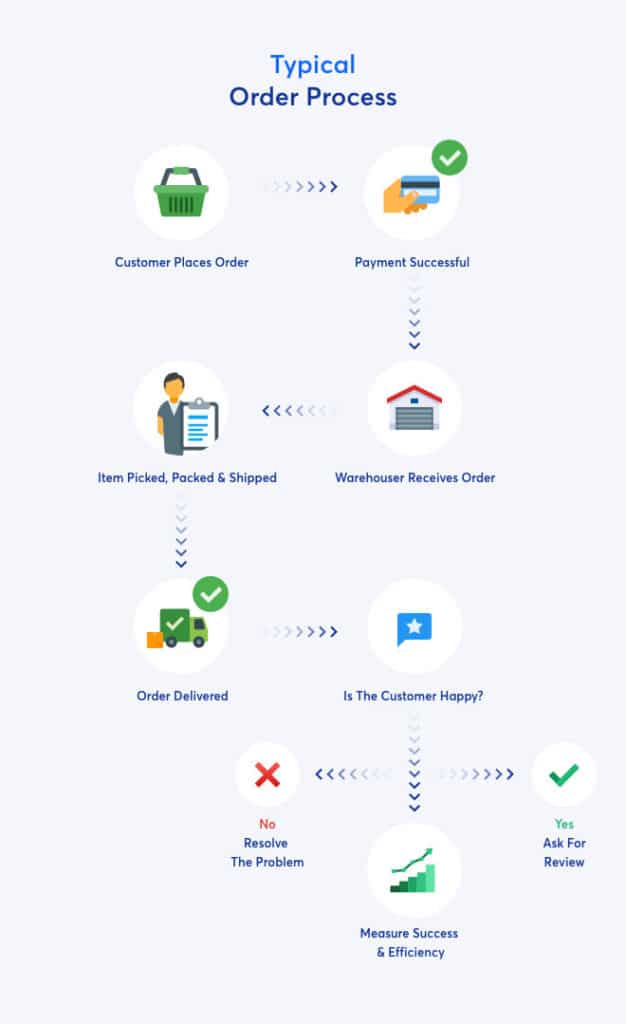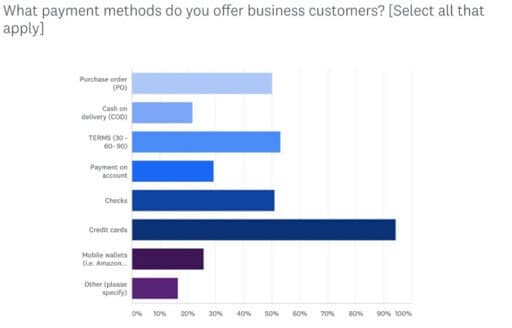Order management definition
At its simplest, order management is the process of getting a product from the point of the initial order to delivery to the customer. Depending on your business model, precisely what that entails can differ. In most cases, the entirety of the order process is depicted in the below image.

In some cases, though, there are extra steps. Dealing with returns and refunds can also fall under the order management umbrella. For non-e-commerce brands, too, invoicing and chasing payments may also play a part. We’ll talk more about that a little later.
Thus, order management includes everything needed by a firm to monitor, track, control, and complete that process. It encompasses all the following factors, and more:
-
Customer communication
-
Sales via multiple channels
-
Tracking inventory & supply chains
-
Logistics & third-party logistics (3PL)
-
Customer service
Order management, too, differs slightly depending on your niche and business model. Let’s take a look at a couple of examples.
E-Commerce Order Management
In e-commerce, there’s a recognizable order process that changes little from one transaction to the next. We’ve summarized that process below. It’s what brands must monitor and control via order management:
-
A consumer places an order for a product. They may do so through the firm’s website, or via third-party e-commerce platforms.
-
The business logs and accepts the purchase. They may do so manually – i.e., on a spreadsheet – or through an OMS.
-
The customer gets a confirmation email, detailing that payment has been taken. The message may also confirm when they should expect delivery.
-
Items needed for the order get allocated to it from the firm’s inventory. Once again, this may be either a manual or automatic process.
-
Details of the order get sent to the company’s warehouse. The warehouse team pick the required products, pack them, and ship them to the customer.
-
Customers receive confirmation of dispatch, and then their order itself. The company may make new orders from suppliers to replace the inventory used for the order.
-
(Possible) The customer contacts the business with queries or complaints about their order. They may do so via a phone system, email, or other available channels.
-
(Possible) The firm resolves any issues. That may mean providing replacement products, refunds, or offering different solutions. The company must account for all inventory and accounting implications.
The Extra Steps in the ‘Order to Cash Process’
For B2B and other non-e-commerce brands, the process is slightly different. Firstly, there are a few different ways in which sales may get made. They include at trade shows, via wholesale, or through electronic data interchange (EDI).

Payments for orders, too, don’t often get made when they’re placed. That leads to the following extra steps which get added to the end of the order fulfillment process:
-
At an agreed-upon interval, the seller creates an invoice for the order and sends it to the buyer.
-
The buyer pays for their order according to the options afforded them on the invoice.
-
The vendor receives payment and makes the pertinent additions to their accounting systems.
This variety of order process begins with an order and ends with the seller getting cash for that order. That’s why it’s generally known as the ‘order to cash process’.
